How ‘No-Code’ Bot can help Ed-Tech Industry to solve major problems of ‘Customer Service’
Case Studies Conversational Leadership
Apurva Sharma
Published on 16 Feb 2023Highlights

The education technology (Ed-Tech) industry has been growing rapidly in recent years, driven by the increasing demand for online education and remote learning. However, with growth comes new challenges, and one of the biggest challenges faced by the Ed-Tech industry is providing efficient and effective customer service. As the number of customers increases, it becomes increasingly difficult to handle customer queries and complaints in a timely and effective manner. This is where ‘no-code’ bots come into play, offering a solution to the Ed-Tech industry’s customer service problems.
What is ‘No-Code’ Bots?
No-code bots are chatbots that can be built and deployed without any programming knowledge. They allow businesses to create chatbots using a graphical interface that requires no coding skills. No-code bots use artificial intelligence and natural language processing to understand and respond to customer queries, providing a fast and efficient way to handle customer service requests.
The benefits of using ‘No-Code’ Bots in the Ed-Tech Industry
The Ed-Tech industry has been using chatbots for customer service for some time now, but the traditional chatbots were limited in their ability to understand and respond to customer queries. No-code bots, on the other hand, offer several benefits to the Ed-Tech industry, including
- Improved Response Times: No-code bots can respond to customer queries instantly, providing 24/7 customer support. This means that students and parents can get the help they need, whenever they need it, without having to wait for a human representative to become available.
- Cost Savings: By automating customer service with no-code bots, Ed-Tech companies can save on the cost of hiring and training customer service representatives. This allows them to invest more in other areas of their business, such as product development or marketing.
- Personalized Service: No-code bots can be programmed to provide personalized responses to customer queries. They can use customer data to provide tailored responses, making the customer feel valued and understood.
- Scalability: As the number of customers grows, it becomes increasingly difficult to handle customer service requests in a timely and effective manner. No-code bots can be scaled up to handle large volumes of customer queries, without compromising on response times or quality of service.
- Multilingual Support: Ed-Tech companies can cater to a global audience by using no-code bots to provide multilingual customer support. No-code bots can be programmed to understand and respond to queries in multiple languages, making it easier to provide support to a diverse customer base.
Bots that can be created for Edtech
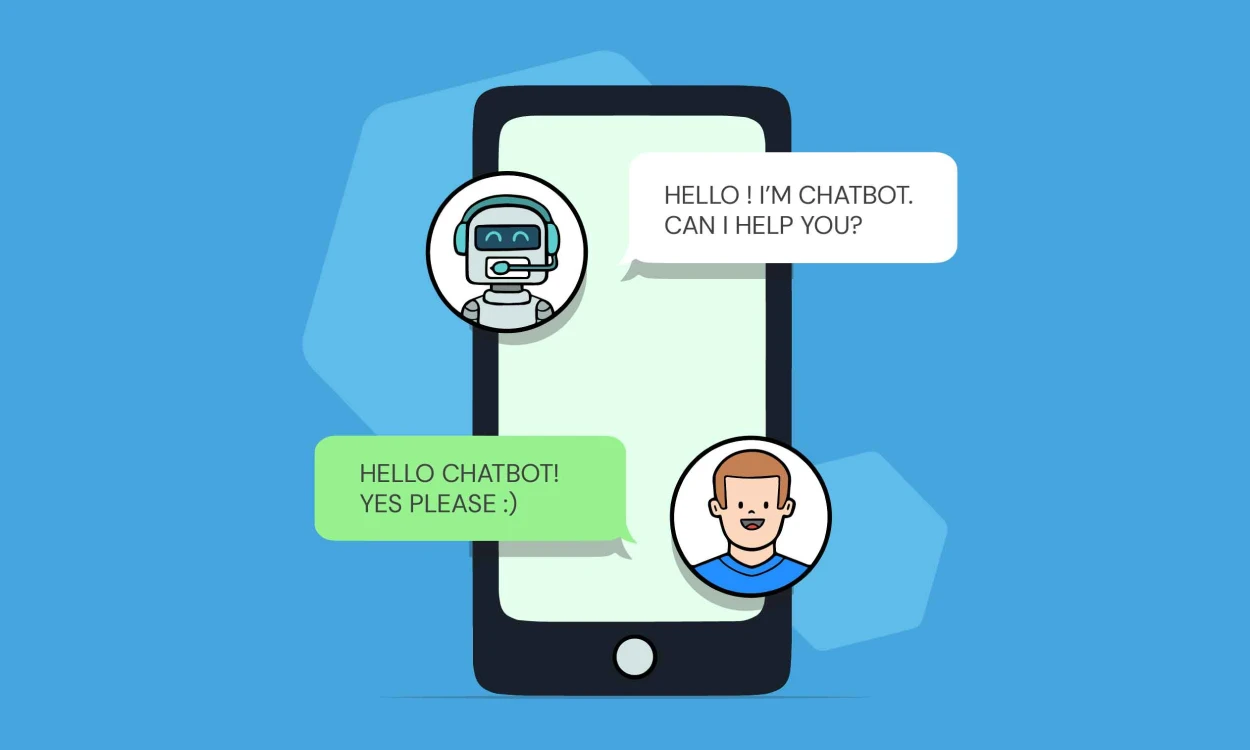 There are several types of bots that can be built for the Edtech industry, each with its own unique benefits and use cases. Here are some of the most common types of bots that can be built for Edtech:
There are several types of bots that can be built for the Edtech industry, each with its own unique benefits and use cases. Here are some of the most common types of bots that can be built for Edtech:
- Informational bots: These bots are designed to answer common questions and provide information about courses, programs, and other educational resources. They can be used to help students and teachers find the information they need quickly and easily.
- Personalized learning bots: These bots use machine learning algorithms to deliver personalized learning experiences to students based on their interests, learning styles, and progress. They can recommend relevant courses, content, and activities to help students learn more effectively.
- Assessment bots: These bots are designed to assess students’ understanding of course material through quizzes, tests, and other interactive activities. They can provide immediate feedback and help teachers identify areas where students may need extra support.
- Mentor bots: Mentor bots can provide personalized learning experiences to students based on their individual needs and interests. By understanding a student’s learning style, the bot can recommend courses, activities, and resources that are most relevant to them.
- Support bots: These bots provide on-demand support to students and teachers, helping them troubleshoot issues and answer questions in real time. They can reduce the need for long wait times or scheduling appointments.
- Feedback bots: These bots can be used to collect feedback from students and teachers on courses, programs, and other educational resources. They can help institutions identify areas for improvement and enhance the overall learning experience.
Overall, bots can play a valuable role in the Edtech industry by automating various tasks, providing personalized learning experiences, and enhancing communication between students and teachers. By leveraging the power of bots, institutions can improve the efficiency and effectiveness of their educational programs and deliver better outcomes for students.
Creating chatbots without any knowledge of coding
Creating chatbots without coding has become increasingly popular with the rise of no-code/low-code platforms. Here are some steps to create chatbots without coding:
- Choose a no-code/low-code platform: There are many no-code/low-code platforms available in the market such as Chatfuel, DashCX, ManyChat, Tars, Landbot, etc. Choose a platform that suits your needs and budget.
- Define the purpose of the chatbot: Determine the specific tasks or functions that you want the chatbot to perform. Will it be used for providing customer support, automating sales, answering common questions, or delivering course materials?
- Create a flowchart of the chatbot: Map out the conversation flow of the chatbot, including all possible user inputs and outputs. This can be done using a tool like draw.io or Lucidchart.
- Use the no-code/low-code platform to build the chatbot: Once you have a flowchart of the chatbot, you can use the no-code/low-code platform to build it. DashCX’s drag-and-drop interface, allows you to create and edit chatbot interactions without writing any code.
- Test and refine the chatbot: Test the chatbot thoroughly to ensure that it works as expected. Make refinements to the conversation flow and interaction design as needed.
- Deploy the chatbot: Once you are satisfied with the chatbot, deploy it on your website, social media channels, or messaging platforms like WhatsApp or Facebook Messenger.
Overall, creating chatbots without coding is an accessible and cost-effective way to automate various business functions. With the help of no-code/low-code platforms, businesses can create chatbots that are user-friendly and engaging without having to rely on programming skills.
How Bots Are Solving Major Issues of Retention in the Ed-Tech Industry?
The Ed-Tech industry faces several customer service problems, including long wait times, lack of personalization, and difficulty in resolving queries. No-code bots can help solve these problems in the following ways:
- Providing Instant Support: With no-code bots, customers can get instant support for their queries, without having to wait for a human representative to become available. This helps to reduce wait times and improve customer satisfaction.
- Automating Common Queries: No-code bots can be programmed to handle common queries, such as login issues, payment problems, or course details. This helps to reduce the workload on customer service representatives, allowing them to focus on more complex queries that require human intervention.
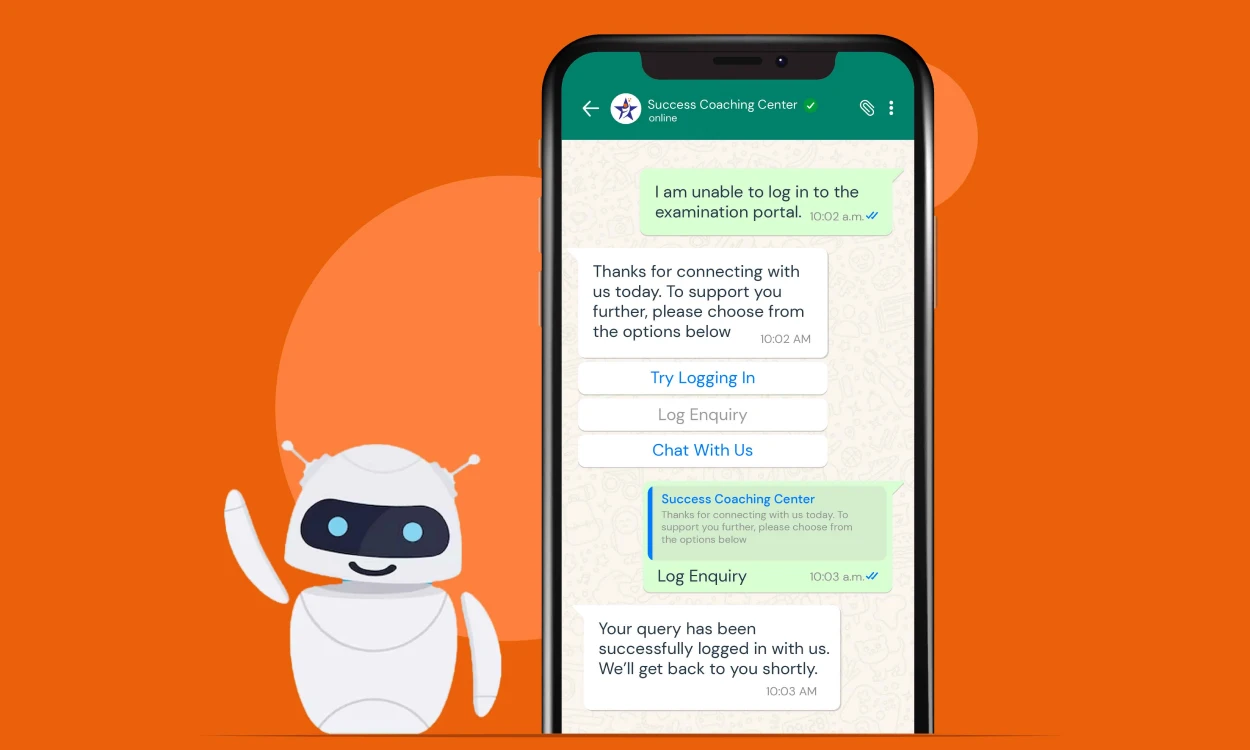
- Personalizing Responses: No-code bots can use customer data to provide personalized responses to queries. For example, if a student asks about a particular course, the bot can provide information that is specific to that course. This helps to make the customer feel valued and understood, improving customer satisfaction.
- Resolving Queries Faster: No-code bots can use artificial intelligence and natural language processing to understand and respond to queries in real time. This helps to resolve queries faster, reducing the time and effort required to resolve customer queries.
Sharing learning materials to enhance learning
Chatbots can be a great tool for enhancing learning on WhatsApp. Here are some suggestions for using chatbots to improve the learning experience:
- Personalized learning: Chatbots can provide personalized learning experiences for students based on their interests, learning styles, and progress. By tracking student data and using machine learning algorithms, chatbots can recommend courses, provide feedback, and suggest study materials.
- Practice questions: Chatbots can be used to deliver practice questions and quizzes to students. Students can receive instant feedback on their performance, helping them to identify areas for improvement.
- On-demand support: Chatbots can be programmed to provide on-demand support for students. When a student has a question or needs help with a particular topic, they can message the chatbot for assistance. This can help to reduce wait times and ensure that students receive support when they need it.
- Interactive learning: Chatbots can be used to deliver interactive learning experiences, such as games, simulations, and role-playing activities. These types of activities can help to engage students and promote deeper learning.
- Learning analytics: Chatbots can be used to track student data and generate insights into learning performance. This can help teachers to identify areas for improvement and make data-driven decisions to improve the learning experience.
Overall, chatbots can be a powerful tool for enhancing the learning experience on WhatsApp. By providing personalized learning, practice questions, on-demand support, interactive learning, and learning analytics, chatbots can help to improve student engagement and promote deeper learning.
Importance of WhatsApp API in the Edtech Industry
The WhatsApp Business API can play an important role in the Edtech industry, enabling educational institutions to improve their communication with students and enhance the learning experience. Here are some ways the WhatsApp API can be used in the Edtech industry:
- Course reminders and updates: Institutions can use the WhatsApp API to send course reminders and updates to students, keeping them informed about important dates, deadlines, and schedule changes.
- Personalized learning: With the help of chatbots and machine learning algorithms, the WhatsApp API can be used to deliver personalized learning experiences to students based on their interests and learning styles.
- Two-way communication: The WhatsApp API can be used to facilitate two-way communication between students and teachers. Students can use WhatsApp to ask questions, seek feedback, and participate in class discussions.
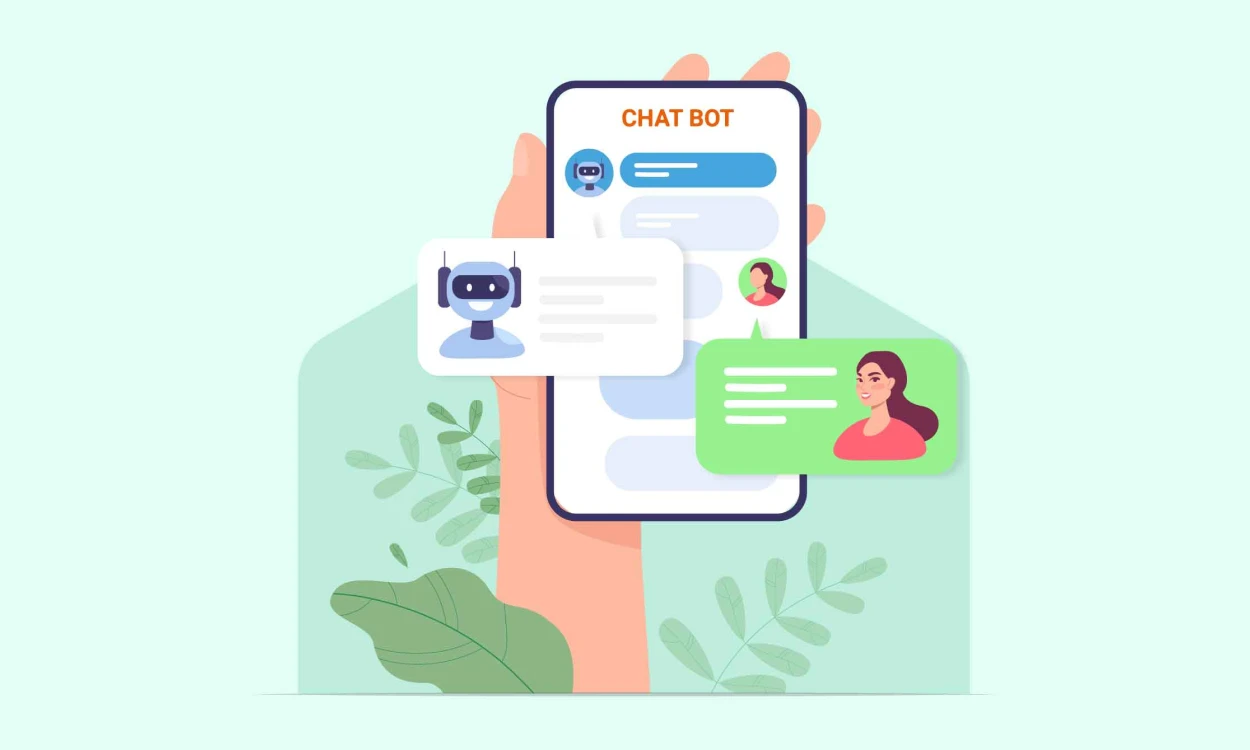
- On-demand support: The WhatsApp API can be used to provide on-demand support to students. Students can message the institution’s WhatsApp account for immediate assistance, reducing the need for long wait times or scheduling appointments.
- Sharing study materials: Institutions can use the WhatsApp API to share study materials with students, including course notes, presentations, and lecture recordings.
Overall, the WhatsApp API can be a powerful tool for educational institutions looking to enhance the learning experience and improve their communication with students. By leveraging the API’s capabilities, institutions can create personalized learning experiences, facilitate two-way communication, and provide on-demand support, all of which can lead to better learning outcomes and increased student engagement.
Make conversations smarter in the Edtech industry
Making conversations smarter in the Edtech industry means leveraging the capabilities of technology to create more personalized and effective learning experiences for students. Here are some ways that technology can be used to make conversations smarter:
- Chatbots: As mentioned earlier, chatbots can provide personalized learning experiences, support, and assessment to students. They can also help teachers automate certain tasks and focus on more important teaching activities.
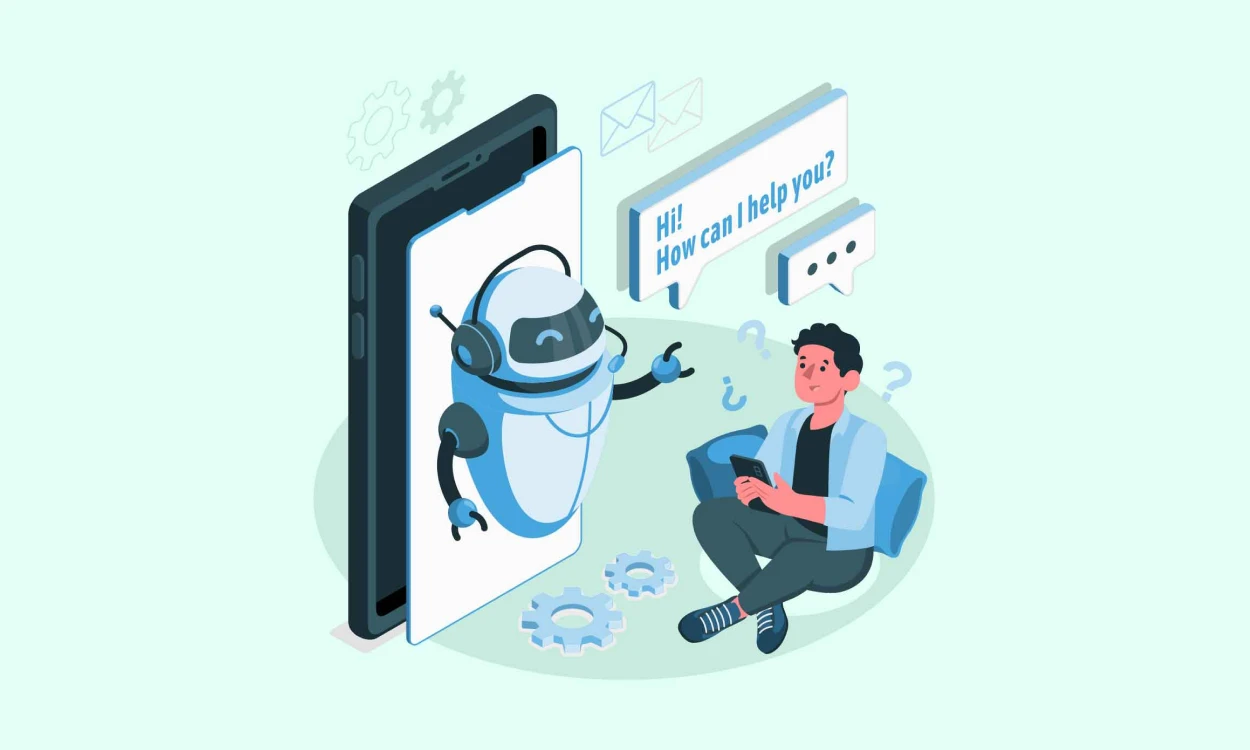
- Natural Language Processing (NLP): NLP technology can help chatbots and other Edtech applications understand and respond to human language more accurately. This can help create more engaging and effective conversations with students.
- Intelligent Tutoring Systems (ITS): These are computer programs that use AI and machine learning algorithms to provide students with personalized tutoring and feedback. They can analyze a student’s learning progress and provide targeted feedback to help them improve.
- Virtual and Augmented Reality: These technologies can provide students with a more immersive and interactive learning experience, making conversations and learning more engaging and memorable.
By leveraging these technologies and making conversations smarter, the Edtech industry can help students learn more effectively and efficiently, while also making learning more engaging and enjoyable.
All things considered
The Ed-Tech industry is facing several customer service problems, and no-code bots offer a solution to these problems. By automating customer service with no-code bots, Ed-Tech companies can provide instant support, reduce wait times, automate common queries, and personalize responses. No-code bots can also be scaled up to handle large volumes of customer queries, making it easier to provide support to a diverse customer base.
With the benefits of improved response times, cost savings, personalized service, scalability, and multilingual support, no-code bots have the potential to revolutionize the customer service experience for the Ed-Tech industry. As the demand for online education and remote learning continues to grow, Ed-Tech companies that embrace no-code bots for customer service are likely to gain a competitive advantage over those that do not.
Are you looking to build an Edtech chatbot for your business?
First thing first, you need a WhatsApp API for getting started. With DashCX, you can build a no-code chatbot with drag and drop builder tailored to your business needs. With DashCX’s no-code chatbot, universities & educational institutions can engage prospective students and drive admissions. As a result, the process will be quicker and easier.
You can offer round-the-clock support to your students while taking care of enrollments, admissions, etc. Resolve queries faster and boost enrollments along with enabling your institution to conduct a live session with students or parents. Make the user journey intuitive by creating custom chat blocks to manage the high volume of conversations and improve customer experience. Sign up for a free demo to build your Edtech chatbot now.
Make your WhatsApp conversations faster, automatic, and more effective with your team.
Recent Blogs

25-08-2023
Streamlining Bulk Messaging: A Guide to Utilizing WhatsApp Cloud API & DashCX in South Africa
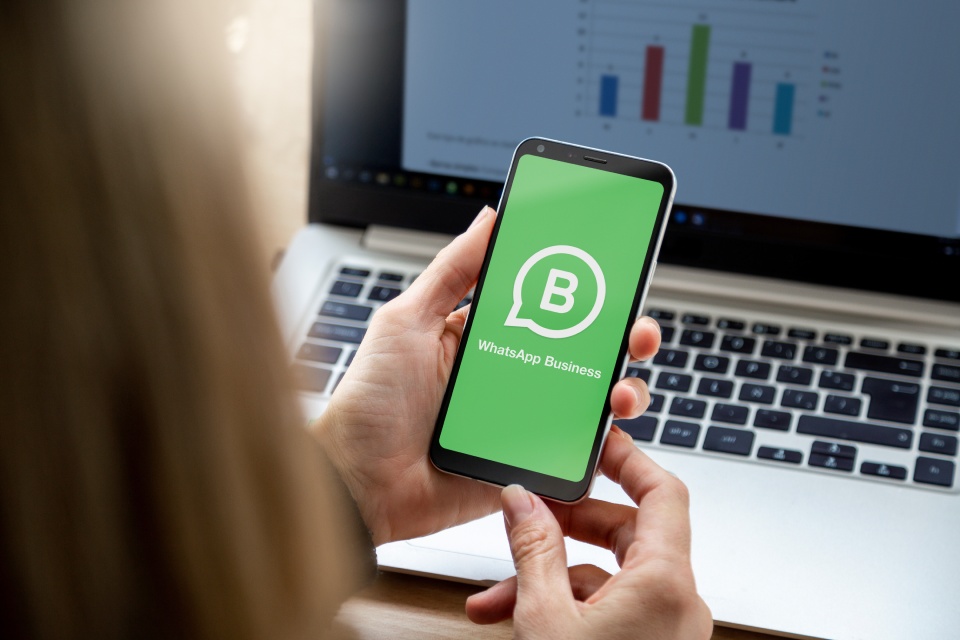
25-08-2023
Unified Messaging Made Easy: Utilizing WhatsApp Cloud API & DashCX Mobile App for Seamless Communication in South Africa

25-08-2023
Elevating Business Growth: Harnessing the Potential of WhatsApp Cloud API with DashCX for South African Entrepreneurs
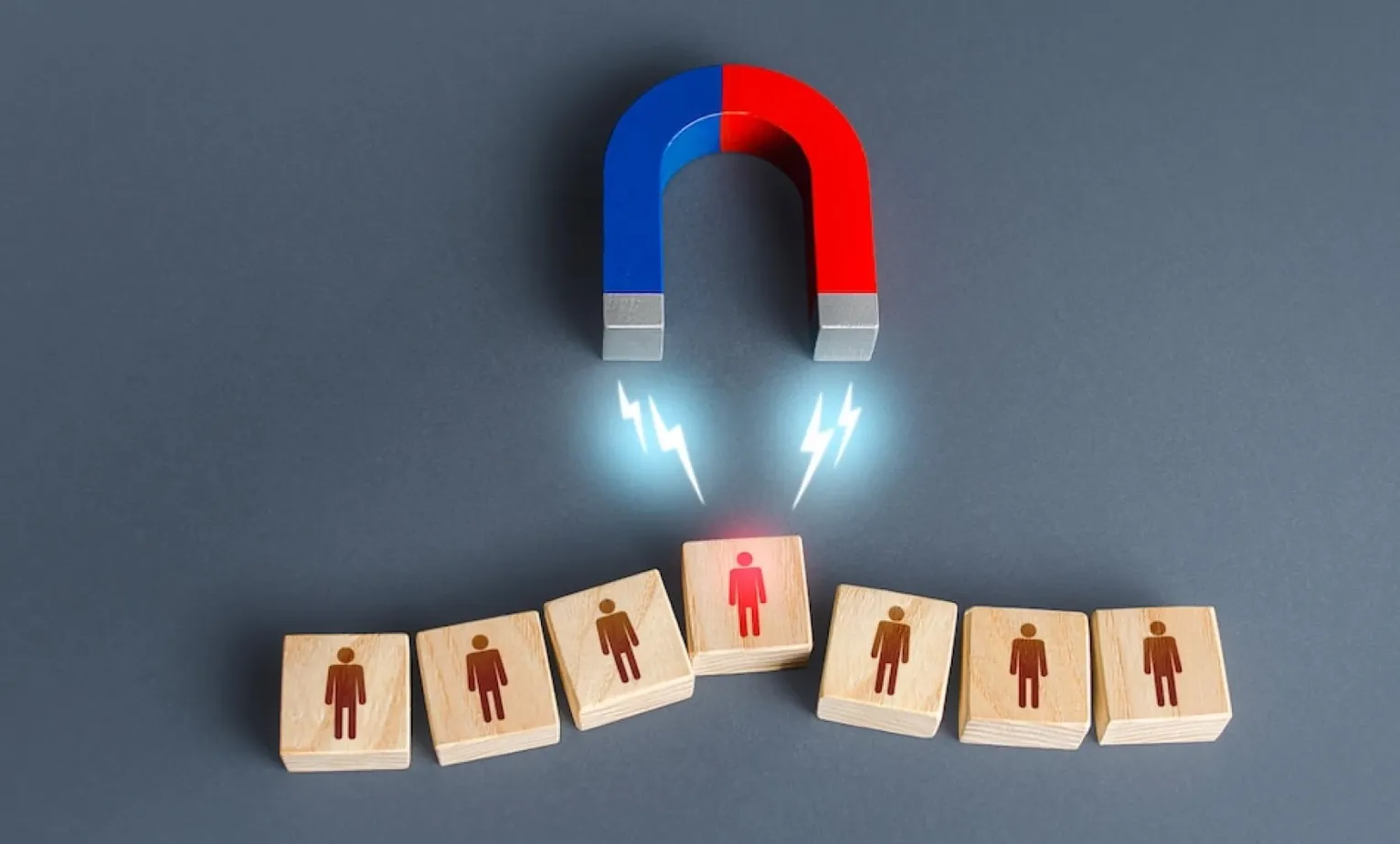
30-03-2023
How to Create an Effective Lead Generation Campaign on WhatsApp
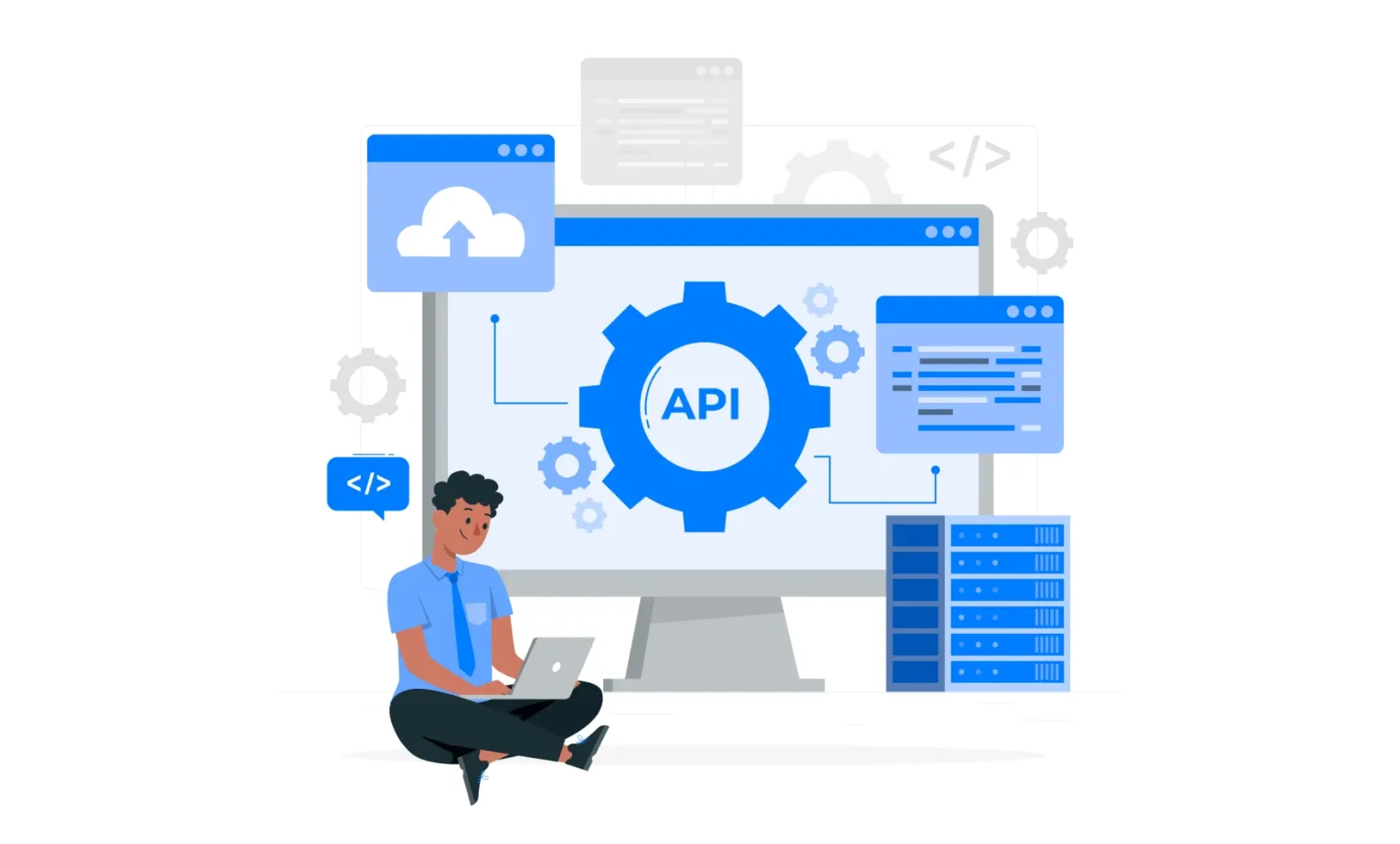
28-03-2023
What are the best WhatsApp Business API Providers? Find Out Now!

22-03-2023
How Stock broker companies use WhatsApp API to give insights into the portfolio to their ‘Customers’
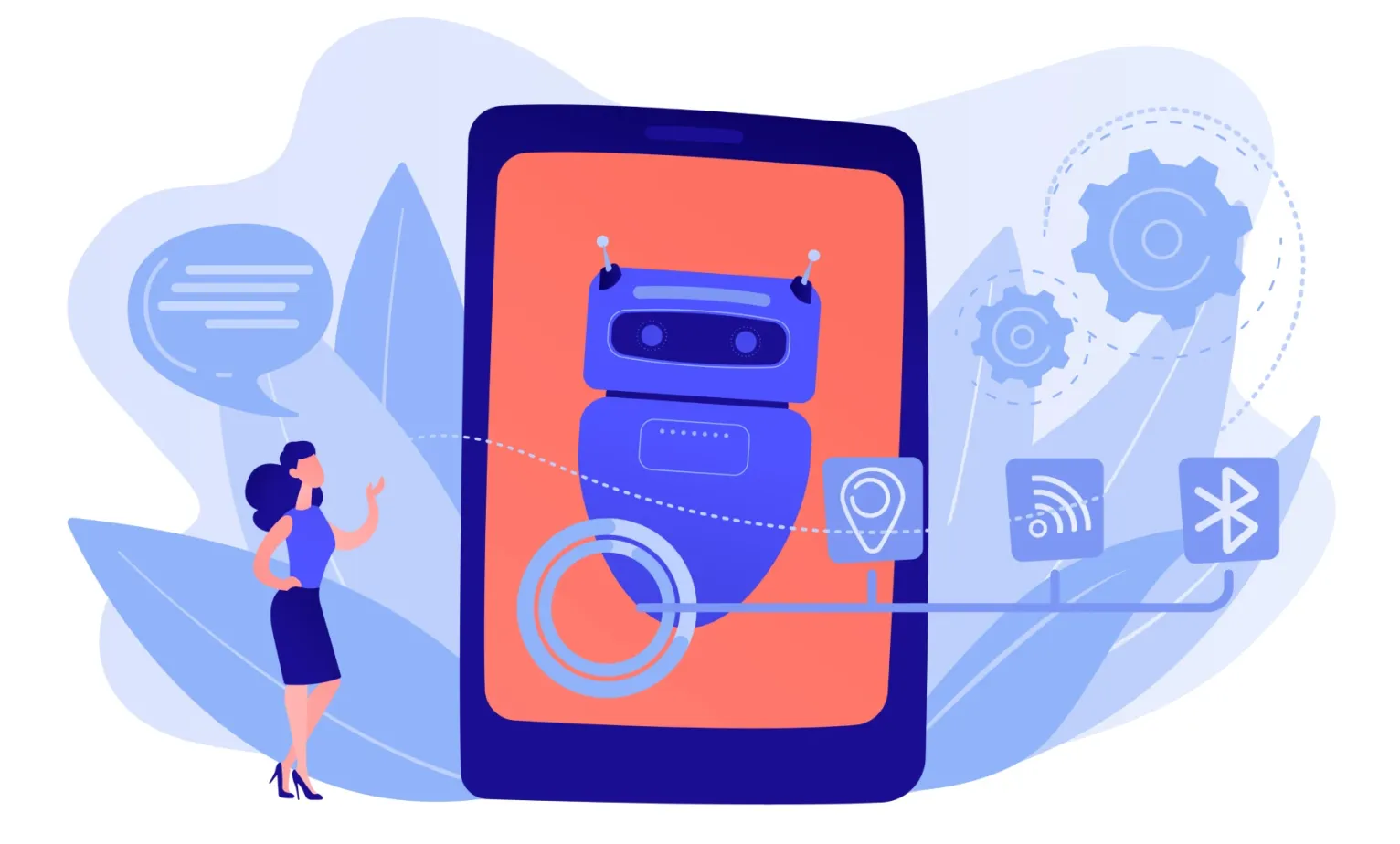
19-03-2023
Impact of Automation in WhatsApp API Across Industries: A Closer Look

13-03-2023
How can the manufacturing sector leverage automation in WhatsApp Business API to help achieve their business goals

10-03-2023